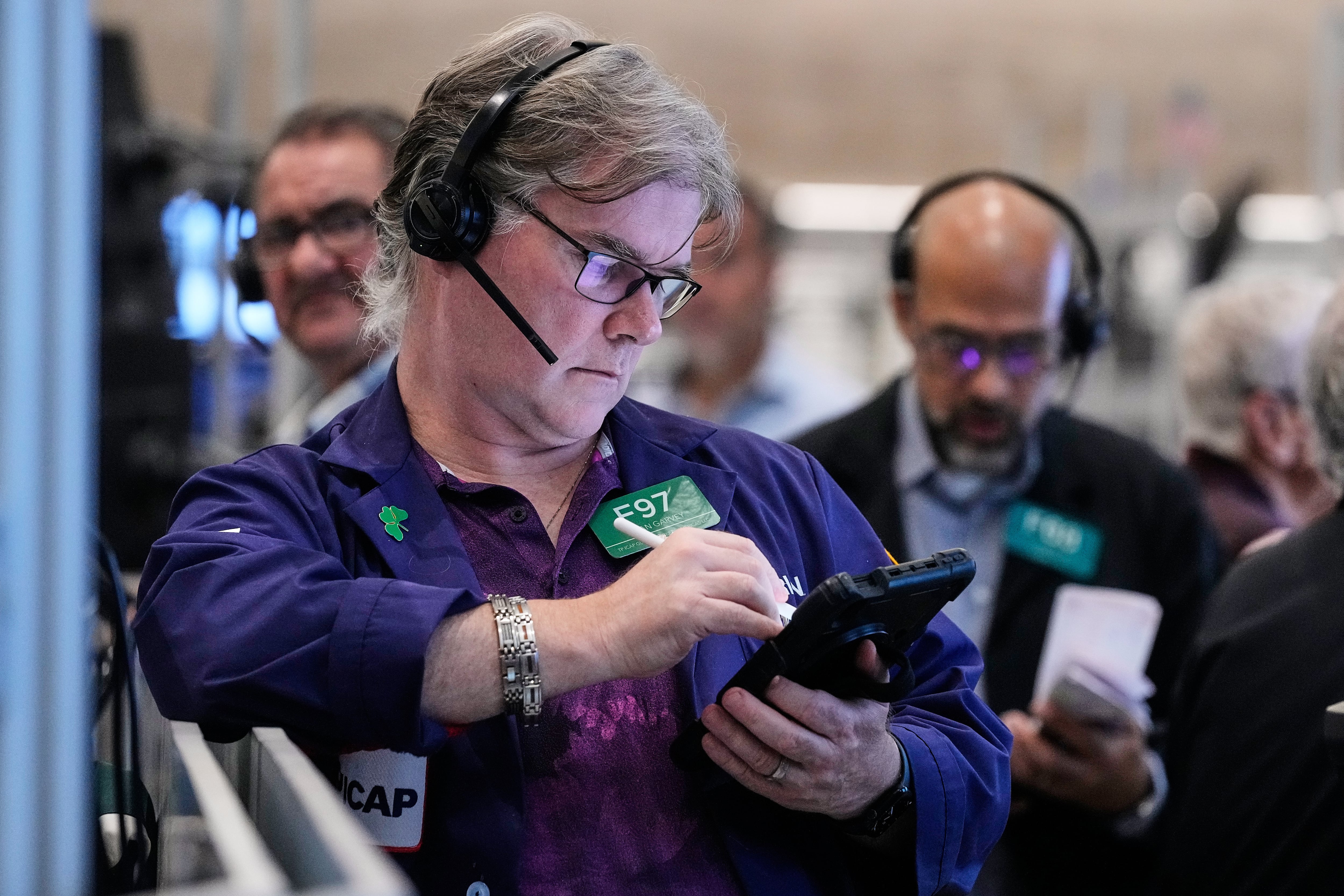LOS ANGELES (AP) — It pays less and less to buy and flip a home these days.
From April through June, the typical home flipped by an investor resulted in a 25.1% return on investment, before expenses. That’s the lowest profit margin for such transactions since 2008, according to an analysis by Attom, a real estate data company.
Gross profits — the difference between what an investor paid for a property and what it sold for — fell 13.6% in the second quarter from a year earlier to $65,300, the firm said. Attom’s analysis defines a flipped home as a property that sells within 12 months of the last time it sold.
Home flippers buy a home, typically with cash, then pay for any repairs or upgrades needed to spruce up the property before putting it back on the market.
The shrinking profitability for home flipping is largely due to home prices, which continue to climb nationally, albeit at a slower pace, driving up acquisition costs for investors.
“We’re seeing very low profit margins from home flipping because of the historically high cost of homes,” said Rob Barber, Attom’s CEO. “The initial buy-in for properties that are ideal for flipping, often lower priced homes that may need some work, keeps going up.”
The median price of a home flipped in the second quarter was bought by an investor for $259,700, a record high according to data going back to 2000, according to Attom.
The median sales price of flipped homes was $325,000, unchanged from the first quarter, the firm said.
A chronic shortage of homes on the market and heightened competition for lower-priced properties are also helping drive up investors’ acquisition costs.
Home flipping profits have declined for more than a decade as home prices rose along with the housing market’s recovery from the housing crash in the late 2000s.
Consider, in the fall of 2012, the typical flipped home netted a 62.9% return on investment before expenses, Attom said.
Even as home flipping has become less profitable, such transactions remain widespread.
Some 78,621 single-family homes and condos were flipped in the April-June quarter, accounting for 7.4% of all home sales during the quarter — a slight decline from both the first quarter and the second quarter of 2024, according to Attom.
As home sales have slowed, properties are taking longer to sell. That’s led to a sharply higher inventory of homes on the market, benefiting investors and other home shoppers who can afford to bypass current mortgage rates by paying in cash or tapping home equity gains.
With many aspiring homeowners priced out of the market, real estate investors — whether those looking to buy and rent or home flippers — are taking up a bigger share of U.S. home sales overall.
Some 33% of all homes sold in the second quarter were bought by investors -- the highest share in at least five years, according to a report by real estate data provider BatchData.
Between 2020 and 2023, the share of homes bought by investors averaged 18.5%.
All told, investors bought 345,752 homes in the April-June quarter, an increase of 15% from the first quarter, but a 12% decline from the same period last year, the firm said.
Even so, investor-owned homes account for roughly 20% of the nation’s 86 million single-family homes, the firm said.
The mighty heft of Amazon is pulling the U.S. stock market higher. The S&P 500 rose 0.6% Friday, erasing some of its slump from the day before and pulling closer to its all-time high set on Tuesday. The index is on track to close a third straight winning week and a sixth straight winning month, which would be its longest monthly winning streak since 2021. The Dow Jones Industrial Average added 65 points, and the Nasdaq composite climbed 1.1%. Amazon led the way after delivering a much bigger profit than analysts expected. Treasury yields eased a bit in the bond market.
President Donald Trump said he has decided to lower his combined tariff rates on imports of Chinese goods to 47% after talks with Chinese leader Xi Jinping on curbing fentanyl trafficking.
The Federal Reserve cut its key interest rate Wednesday for a second time this year as it seeks to shore up economic growth and hiring even as inflation stays elevated. The move comes amid a fraught time for the central bank, with hiring sluggish and yet inflation stuck above the Fed’s 2% target. Compounding its challenges, the central bank is navigating without much of the economic data it typically relies on from the government. The Fed has signaled it may reduce its key rate again in December but the data drought raises the uncertainty around its next moves. Fed Chair Jerome Powell told reporters that there were “strongly differing views” at the central bank's policy meeting about to proceed going forward.
The Federal Reserve will almost certainly cut its key interest rate on Wednesday and could signal it expects another cut in December as the central bank seeks to bolster hiring. A cut Wednesday would be the second this year and could benefit consumers by bringing down borrowing costs for mortgages and auto loans. Since Fed chair Jerome Powell strongly signaled in late August that rate cuts were likely this year, the average 30-year mortgage rate has fallen to about 6.2% from 6.6%. Still, the Fed is navigating an unusual period for the U.S. economy and its future moves are harder to anticipate than is typically the case.
Stocks are rallying toward more records ahead of a week packed with potentially market-moving events. The S&P 500 rose 1% Monday. The Dow Jones Industrial Average added 224 points, and the Nasdaq composite jumped 1.7%. Stocks also climbed in Asia ahead of a meeting on Thursday between the heads of the United States and China. The hope is that the talks could clear rising tensions between the world’s two largest economies. This upcoming week will feature profit reports from some of Wall Street's most influential companies and a meeting by the Federal Reserve on interest rates. Gold fell back toward $4,000 per ounce.
U.S. and Chinese officials say a trade deal between the world’s two largest economies is drawing closer. The sides have reached an initial consensus for President Donald Trump and Chinese leader Xi Jinping to aim to finalize during their high-stakes meeting Thursday in South Korea. Any agreement would be a relief to international markets. Trump's treasury secretary says discussions with China yielded preliminary agreements to stop the precursor chemicals for fentanyl from coming into the United States. Scott Bessent also says Beijing would make “substantial” purchases of soybean and other agricultural products while putting off export controls on rare earth elements needed for advanced technologies.
Some seniors say the Social Security Administration's cost-of-living adjustment won’t help much in their ability to pay for their daily expenses. The agency announced Friday the annual cost-of-living adjustment will go up by 2.8% in 2026, translating to an average increase of more than $56 for retirees every month. Eighty-year-old Florence, South Carolina, resident Linda Deas says it does not match the current "affordability crisis.” The benefits increase will go into effect for Social Security recipients beginning in January. Friday’s announcement was meant to be made last week but was delayed because of the federal government shutdown. Recipients got a 2.5% COLA boost in 2025 and a 3.2% increase in 2024.
Wall Street is heading for records after an update said U.S. households are feeling a bit less pain from inflation than feared. The S&P 500 climbed 1% Friday and was on track to top its all-time high set earlier this month. The Dow Jones Industrial Average jumped 529 points, and the Nasdaq composite rose 1.3%. Both are also heading toward records. The inflation data could clear the way for the Federal Reserve to keep cutting interest rates in hopes of helping the slowing job market. A strong earnings reports from Ford Motor and continued gains for AI stars also drove stocks higher.
Federal Reserve Chair Jerome Powell says that a sharp slowdown in hiring poses a growing risk to the U.S. economy.
Three researchers who probed the process of business innovation have won the Nobel memorial prize in economics for explaining how new products and inventions promote economic growth and human welfare, even as they leave older companies in the dust.













